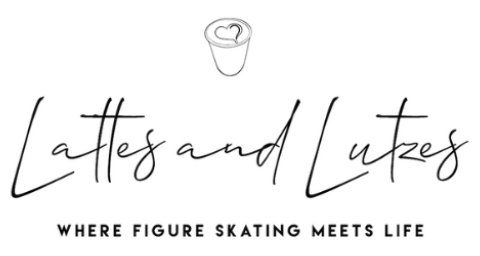
In a recent conversation with my friend and fellow skater, Sarah Don, we delved into her fascinating journey from being an adult competitor in the States to her transition from the US to Finland. As we exchanged stories and insights, I found her experiences both enlightening and inspiring. Join me as I share the highlights of our conversation and delve into Sarah’s journey ‘skating across the pond’.
Would you describe your journey from figure skating in the US to figure skating in Finland? And what prompted the move?
Well, it’s a long story, but basically, my husband and I wanted to try something new, and Finland seemed like a good fit. I found a job here, and it turned out to be a really good decision. I really like it here. We made the move in the middle of COVID, so that made figuring out the skating community here just a bit more challenging. Everything was in a new language, and I was just starting to learn it when we moved, so it was a bit overwhelming. I did have one connection in the States who was able to give me a couple of names of skaters in Finland who I called to learn about classes once things opened back up.
What were some of the big differences that you observed between the figure skating community in the US and in Finland?
There isn’t a huge difference; we definitely have a very active adult skating community here in Finland, and we are really supportive and positive, just like in the US. But the way we that adults organize and practice is different. In the US, a lot of the training tends to be very personalized and individual. Everyone who is learning has a private coach, but in Finland, for kids and adults, the next step after Learn to Skate is to join a group class at your level. These group classes meet several times a week at different rinks, and they focus on specific skills. Each class will focus on one or two jumps, a spin, and some edge work. If you want additional practice or to run your program, you need to purchase the ice time from the rink then organize a group of other skaters to share with. Some of the private rinks can be expensive (160 euros), but the community rinks tend to be very reasonable, say 40 euros for an hour. Although there aren’t the traditional freestyle sessions I was used to in the states, the group classes tend to be around 20-30 euros and include the instructor’s time and the ice time, so it all sort of balances out.
What does the adult competitive landscape look like and have you noticed more of an emphasis placed on artistic expression versus technical skills between the two countries?
In Finland, I think we are culturally a bit more reserved, so the music and costumes are more traditional unlike some of the brighter dresses and modern music seen in the States. But it really depends on the individual skater’s personality; that definitely still comes through in people’s programs. I think the other difference is the overall approach. The adult competitors in Finland aren’t as intense about the IJS judging system as what I saw in the States. I don’t know anyone here keeping spreadsheets of their scores or trying to optimize the components they put into a program to maximize their score. Our feeling is that we love skating and put together the programs that feel good and showcase our style. It’s a great experience traveling around to competitions; we host many here in Finland, but there are a lot of opportunities around Europe. We tend to participate in several in Estonia which is easy to get to.
What other cultural differences have you seen within the sport?
One thing I’ve noticed is that the skating community here is really respectful of each other’s space. When we’re working on jumps, for example, we have a system where we know which direction we should move around the rink, and people tend to give each other enough space. It feels very safe and organized.
How did you overcome the challenges of transitioning between the two figure skating scenes?
The biggest challenge for me was figuring out how to get time to practice by myself. I really thrive on my own practice time, so I had to build my network here so that I could find people to share ice time with. The other thing that took some getting used to was the changing schedule. In the States it was a pretty regimented routine with freestyle sessions happening at the same time and same location each day. Here, the schedule shifts and all my skating could get bunched into three days or be at odd times. It took some time, but I eventually found a routine that works for me.
What advice would you give to another figure skater considering a similar transition?
Don’t panic if it doesn’t seem easy right at the beginning. It takes time to adapt to a new skating scene, but if you ask people for help and stay patient, you’ll find your place in the community. Building your network is key.

0 Comments